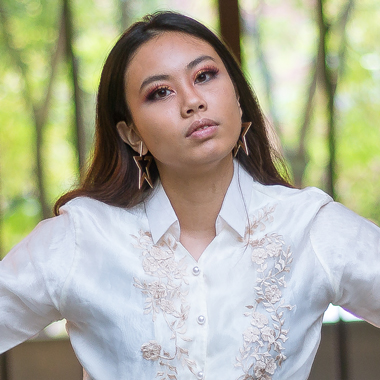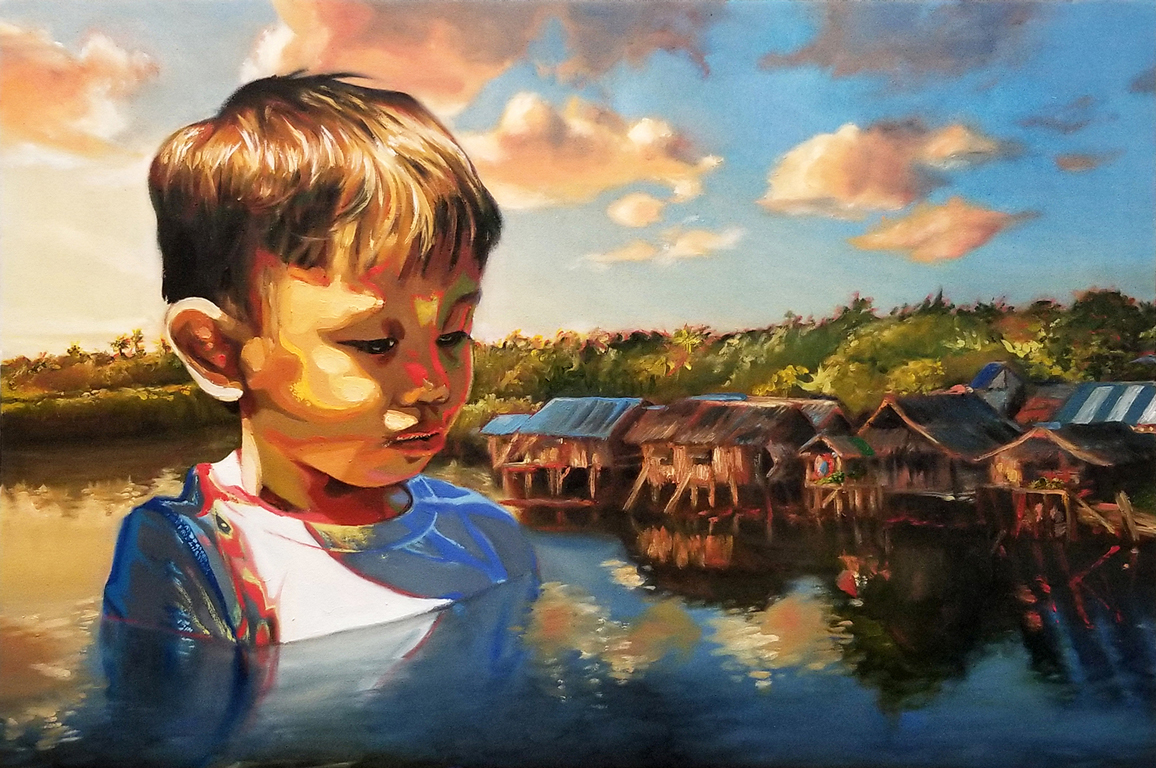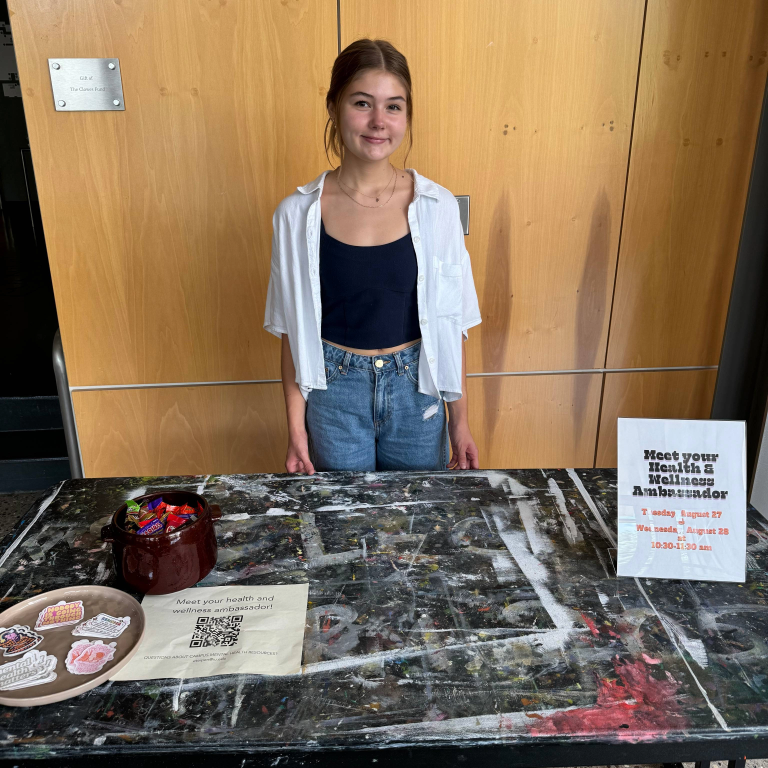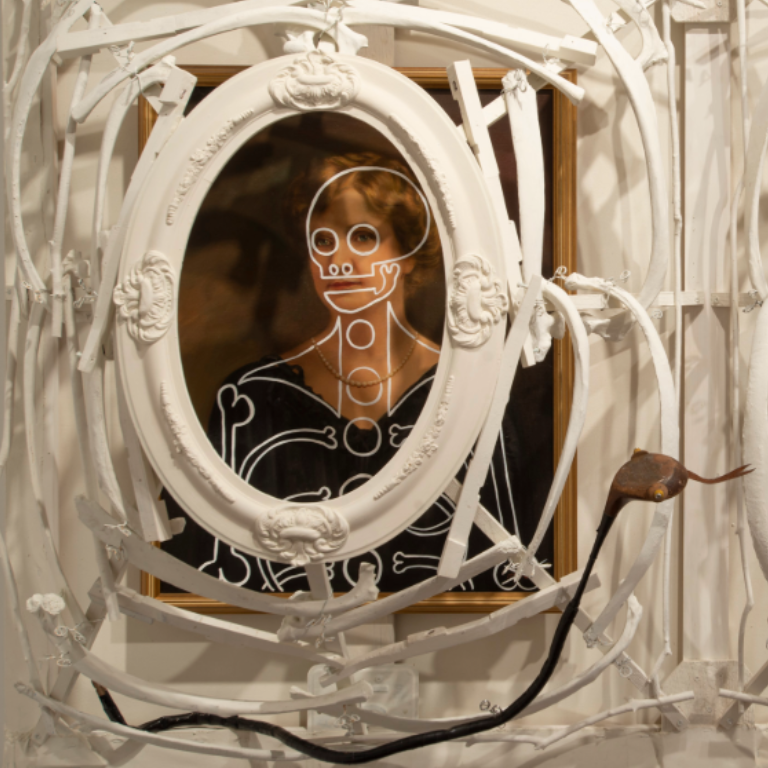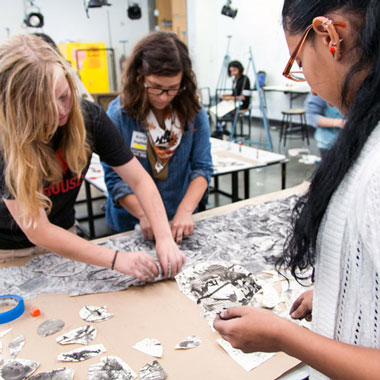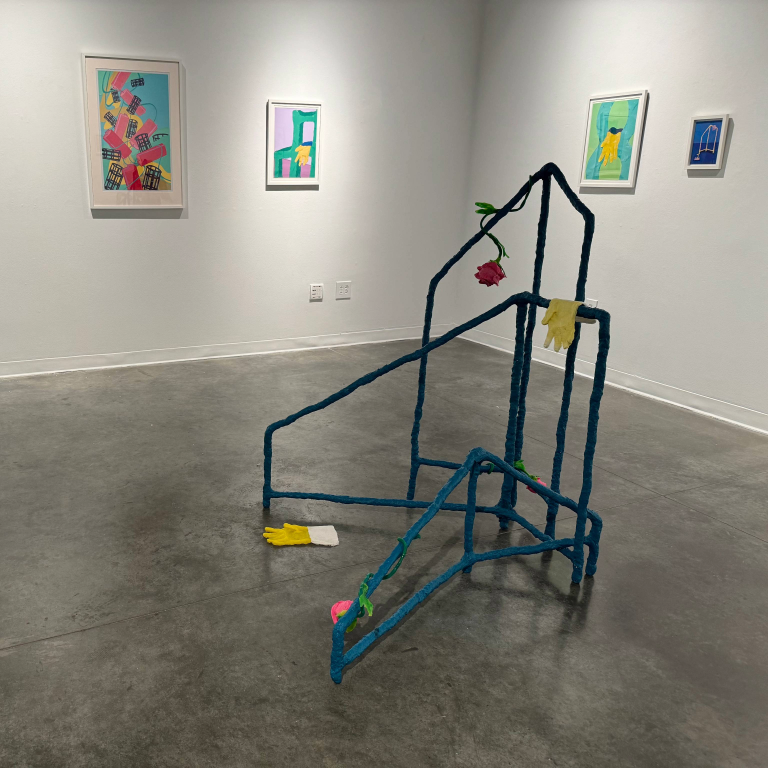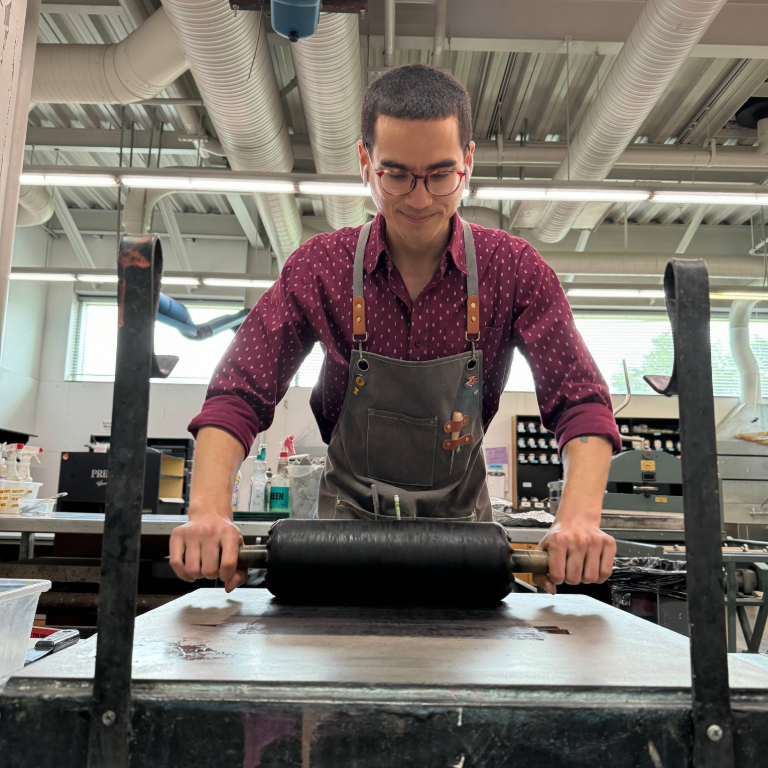Through a series of Q&As, we're shedding light on the academic accomplishments of four Herron students who won 2020 IUPUI Top 100 Awards: Emily Crowel, Shelby Elrod, Abigail Mendoza, and Dane Wallace.
Abigail Mendoza has used her distinct voice, creative talent, and experiences on and off campus to connect art with social justice and raise awareness of issues faced by communities of color.
She is Vice President Internal of the Midwest Association of Filipino Americans, a founding member of IUPUI Sigma Psi Zeta Sorority's Alpha Omicron Charter, as well as a founding member and executive board officer of the Vietnamese Student Association at IUPUI. Through these positions, she co-presented student workshops on topics such as mental health and art therapy, how colonialism has shaped beauty standards, and toxic masculinity.
Mendoza is set to graduate in May with a B.F.A. in painting.
HERRON: You're majoring in painting and minoring in psychology while working towards a pre-art therapy certificate. How are you connecting these three disciplines as a unified art practice?
ABIGAIL MENDOZA: There are many ways art and psychology can be used together, providing a means to heal others and help survive trauma. In my social psychology class, I'm currently working on a research project that analyzes activism in contemporary art practices and how its psychological effects can be used in art therapy.
Personally, I think it's important to maintain the balance of "artist vs. art therapist." I use painting as a vehicle for empowering others to creatively convey their own emotions and experiences.
HERRON: You served as an Indiana Arts Commission juror for a competition of mental health-related art projects. What interests you about exploring creative expression and mental wellbeing?
MENDOZA: My ultimate goal is to work with communities of color, particularly since mental health issues are a taboo topic among racial and ethnic minority communities and, therefore, not often seen as a priority. I want to combat this stigma through art therapy, allowing clients to creatively communicate their emotions and experiences in ways that no language barrier will hold back. The mental health care field lacks diversity, so seeing someone who looks like me in this role may have a positive impact.
I also want to give others the opportunity to be treated by someone who understands what it's like to face certain injustices that we can't control because of our cultural background or the color of our skin. By developing art programs within these communities, I hope that my future clients will be able to find power in who they are by creatively engaging with tools and materials they can control.
HERRON: Tell us about your latest painting series, which features familial themes overlaid with various urban and suburban scenery. What's the inspiration for this work?
MENDOZA: My work unpacks the struggles of belonging, impostor syndrome, and the perpetual foreigner stereotype through the lens of a second-generation Filipinx-American. I paint children of Filipinx heritage enlarged in scale and placed in surroundings where Filipinx should feel at home, even though I sometimes feel like an outsider in these spaces.
The backgrounds of my paintings depict easily recognizable architecture and landscapes from the Philippines and Chicago. These are places where my ancestors originated and where they settled. But by simply pasting children into these scenes, the overall impression often seems disjointed, that the child does not belong.
The subjects are typically my brother, cousins, and myself in our childhood, as we are examples of second-generation Asian immigrants in the U.S. who may be Filipinx in blood, but not necessarily Filipinx in nature. Frequently, relatives from the Philippines would comment about how we were "too Americanized," but in the U.S., we are "the Asian kids." These experiences have led me to articulate the concept of existing in both Eastern and Western cultures.
I paint all children in such a way that they resemble alien-like creatures not only by using highly saturated colors, but also by using an exaggerated scale similar to Godzilla. Godzilla is seen as an alien who brought destruction to cities but was later seen as an antihero in Japanese media. The alienation of such a creature can be contrasted with the alienation of immigrants and their children.
The scale of my work suggests the importance of being louder, bolder, seen, and not ignored.


